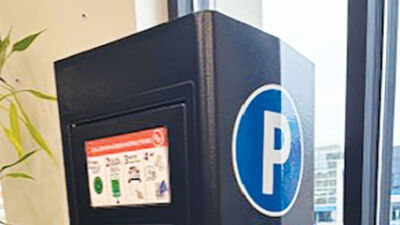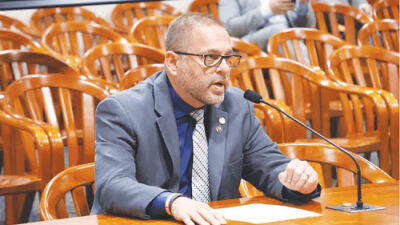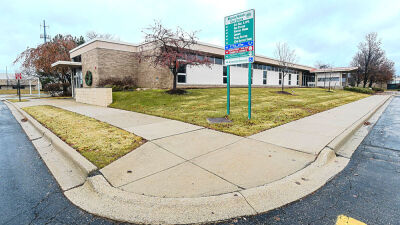ROYAL OAK — On May 19, the Royal Oak Master Plan 2050 was unanimously approved at the City Commission meeting.
On May 19, members of the public were invited to the podium to share their feelings, and there was no shortage of residents who disagreed with the master plan. Few were in favor of the plan.
The proposed plan has seven goals listed in its introduction at planroyaloak.com.
The first goal is to reinforce the city’s historic structure through defining the character of places throughout the city.
The second goal is to advance sustainability and climate action by implementing the city’s Sustainability and Climate Action Plan.
The third goal is to provide more housing options through greater types of housing and supply. The third goal includes wanting to provide housing options for every stage of life.
The fourth goal is to preserve and enhance neighborhood character, which includes access to parks and retail areas.
The fifth goal is to reinforce activity centers, providing residents and visitors with destinations for shopping, dining, services and entertainment.
The sixth goal is to increase mobility across the city, ensuring that “people who walk, roll, bicycle, drive, or use public transit are well accommodated throughout Royal Oak.”
The final goal is to align policies, including Royal Oak’s future land use policy, zoning regulations, and other ordinances, to produce the future city that residents and city leaders want.
The master plan was brought before the City Commission following its approval at the April 8 Planning Commission meeting, where edits were made and public comments were heard.
Before the public comment, Planning Commission Chair Gary Quesada shared some thoughts on the plan edited by the Planning Commission.
“We have heard people say things like this plan will virtually eliminate single-family housing as we know it, or that it will allow apartments or duplexes in the middle of neighborhoods, but it doesn’t do that,” Quesada said. “You can rest assured that when you give your vote that this master plan does not advocate or suggest or elude or hint at that. This is not what the master plan is about.”
Woody Gontina, a member of the Planning Commission, also commented on the plan.
“The land-use changes that are suggested in this document will not occur overnight, but change is inevitable and necessary,” Gontina said. “This master plan merely provides the appropriate guardrails for how and what changes ultimately will happen. This plan set forth a pathway for Royal Oak to continue to be strong for our future generations”
Alex Morford, a Royal Oak resident and member of YIMBY Oakland County, said she is in favor of the plan.
“More housing is a good thing. We have a housing affordability crisis in this country and allowing small multifamily homes for people who are interested in living in them can reduce costs by increasing supply,” she said. “I appreciate the master plan’s focus on improving travel around the city for everyone, and I am very excited for bus stop updates and safer ways for pedestrians to cross our major roads. … I believe this proposed master plan will have a positive impact on the community.”
Dave Basinski, Royal Oak resident, shared his thoughts on the master plan.
“Like many here I have some issues with the proposed master plan and I’ve kind of noticed a theme that the people who are speaking in opposition to it are generally those who have lived here the longest,” he said. “The voices in support of it have lived in Royal Oak for all of five minutes. The people whose families have been here for decades … they are the ones that don’t want to see the nature of the community change so drastically as it is proposed in this document.”
Following a presentation outlining the proposed master plan, the City Commission had a discussion.
“We have almost 60,000 residents here or maybe 55,000 adult residents, and it would be impossible for us to hear from all of them; what matters is that we hear from a representative sampling, and I am honestly astonished by the quantity of input we have had in this process and that quantity assures me that, broadly, the plan reflects the values of the people of our city,” City Commissioner Sharlan Douglas said. “I think the plan reflects the values of the people of Royal Oak, it protects our neighborhoods, and I will say that from the very beginning there have been people who are very passionate about protecting our residential neighborhoods, and I think they should all declare a victory after this because the plan does exactly that.”
City Commissioner Amanda Herzog said that the plan is a good way to prepare for the future, which is for people who want walkability and a good quality of life.
“This plan helps and shows our values and our priorities and how we are thinking about the long term,” Herzog said. “I am really proud to see that there are advances in sustainability and climate action that were not in the 1999 plan but are so boldly in this plan.”
Melanie Macey said that it is “unfortunate” the majority of the dialogue about the plan centered around whether or not the city is eliminating single-family housing.
“We are not, and that’s what we have talked about instead of this 90 pages of really incredible material that has been put together by our staff, by the consultant, by the volunteers in the Planning Commission, but also the people in the community,” she said. “It’s a great document and I hope that people who are concerned about it really take the time to really read it and at the very least there are some really great maps in there that you can look at, and I think it really shows interesting things about Royal Oak and how we are set up.”
For more information on the master plan 2050, visit romi.gov.
 Publication select ▼
Publication select ▼






















